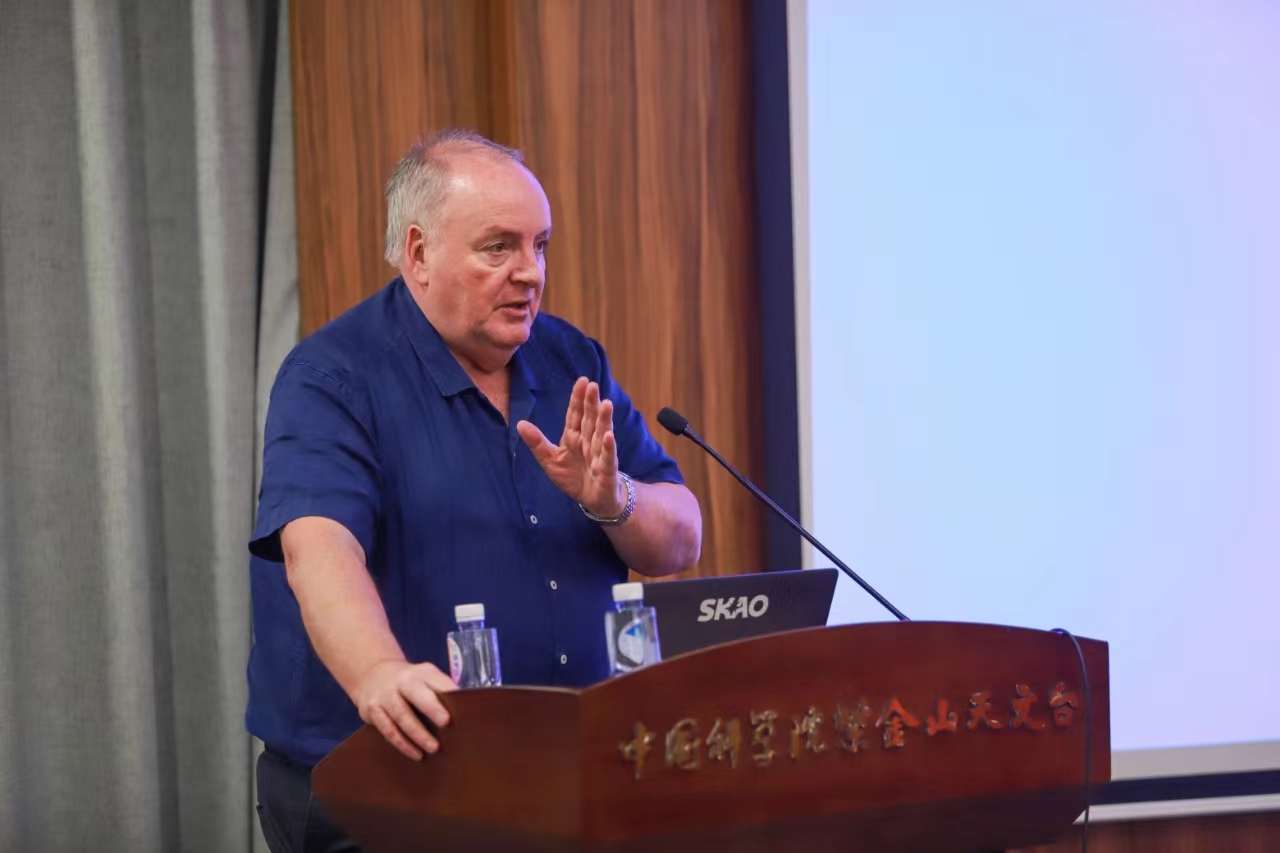SKAO Meeting Plans Growth of Radio Astronomy

Philip Diamond CBE. (Photo provided by the Purple Mountain Observatory, Chinese Academy of Sciences)
By BI Weizi
The Square Kilometre Array Observatory (SKAO) is a major international radio astronomy facility jointly funded by 16 countries and regions.
On March 18 and 19, representatives from SKAO member countries, scientists and SKAO staff gathered in Nanjing to discuss future development and collaborative opportunities, and raise awareness of the Observatory and the SKA project among scientists, policy makers, industries, educational institutions, local communities and the general public.
SKAO is building an array of thousands of radio telescopes with a total effective receiving area of about one square kilometre, making it the world's largest radio astronomy observatory, according to Wu Xuefeng, deputy director of the Purple Mountain Observatory, Chinese Academy of Sciences.
"SKAO is the next generation radio astronomy facility for the world," Philip Diamond CBE, director general of SKAO, told Science and Technology Daily in an exclusive interview.
It will create enough big areas of data collection to enable astronomers to observe the sky in unprecedented detail and faster than any existing system, according to the SKAO website.
"The SKAO was born global. International scientists developed the thinking about what's next at various meetings," Diamond said. It's the international collaboration that has made it happen. Many more countries have expressed their intention to join the project, which means the collection area could be expanded further.
As a billion-dollar international project, SKAO will collect radio waves from an array of hundreds of dishes in South Africa and more than 130,000 antennas in the Australian outback. The SKAO headquarters is in Manchester, England.






